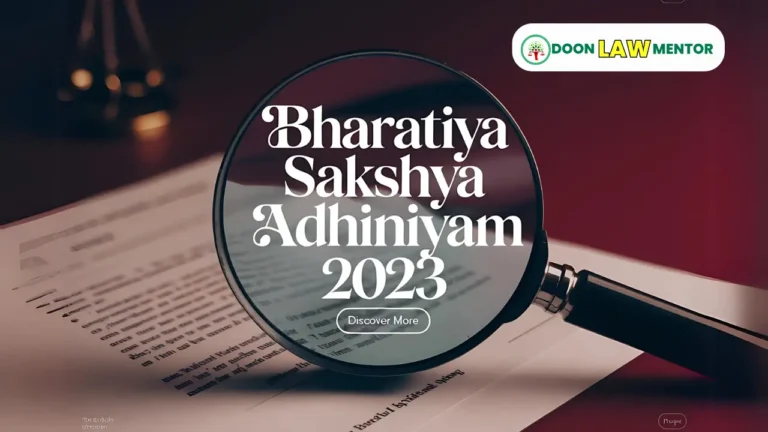In 2025, the Supreme Court mandates States to adopt robust remission policies under Section 432 CrPC and Section 473 BNSS, ensuring automatic consideration for premature release, fair conditions, and procedural safeguards. Explore the landmark judgment and its impact.
Table of Contents
Introduction
In a landmark judgment dated February 18, 2025, the Supreme Court of India issued transformative directives to streamline the premature release of convicts, reinforcing the principles of fairness and liberty under Section 432 of the Code of Criminal Procedure, 1973 (CrPC) and its successor, Section 473 of the Bharatiya Nagarik Suraksha Sanhita, 2023 (BNSS). Titled In Re Policy Strategy For Grant Of Bail (Suo Moto Writ Petition (Criminal) No. 4/2021), this ruling addresses systemic gaps in remission policies across States and Union Territories (UTs). With a bench comprising Justices Abhay S. Oka and Ujjal Bhuyan, the Court emphasized automatic consideration of eligible convicts, reasonable remission conditions, and procedural safeguards, ensuring compliance with constitutional guarantees of liberty. This educational blog delves into the Supreme Court’s directives, the legal framework of remission, key compliance parameters, and the implications for India’s criminal justice system in 2025.
Legal Framework: Remission Under Section 432 CrPC and Section 473 BNSS
Remission, the reduction or suspension of a convict’s sentence, is a critical aspect of criminal justice, balancing rehabilitation with public safety. Section 432 CrPC empowers the appropriate government (State or Central) to suspend or remit sentences, either wholly or partially, with or without conditions. It states:
Section 432. Power to suspend or remit sentences.— (1) When any person has been sentenced to punishment for an offence, the appropriate Government may, at any time, without conditions or upon any conditions which the person sentenced accepts, suspend the execution of his sentence or remit the whole or any part of the punishment to which he has been sentenced…
Section 473 BNSS, effective from July 1, 2024, mirrors this provision, maintaining the government’s authority to grant remission while incorporating modern procedural nuances. Both sections require the government to exercise this power fairly, transparently, and in accordance with established policies to avoid arbitrariness.
Read More: Section 13 CPC: Enforcing Foreign Judgments in India in 2025
Constitutional Context
The Supreme Court’s 2025 ruling underscores that remission impacts a convict’s liberty, a right protected under Article 21 of the Constitution, which guarantees life and personal liberty except by procedure established by law. The Court held that arbitrary or opaque remission processes violate Article 14 (equality before law) and Article 21, necessitating robust policies and procedural safeguards.
Supreme Court’s February 18, 2025 Judgment: Key Directives
In the In Re Policy Strategy For Grant Of Bail case, the Supreme Court issued comprehensive directives to ensure uniform, fair, and transparent remission practices across India. The bench, assisted by amicus curiae Senior Advocate Liz Mathew, addressed the lack of exhaustive remission policies and inconsistent application of Section 432 CrPC and Section 473 BNSS. The key directives are:
- Exhaustive Remission Policy: States and UTs without a comprehensive remission policy must formulate one within two months, ensuring automatic consideration of eligible convicts without requiring individual applications.
- Automatic Consideration: Eligible convicts must be considered for premature release as soon as they meet policy criteria, eliminating the need for specific applications.
- Reasonable Conditions: Conditions for remission must be reasonable, performable, and not oppressive, considering factors like the offence’s nature, convict’s background, public safety, and victim impact.
- Recording Reasons: Orders granting or rejecting remission must include brief reasons, communicated to convicts and District Legal Services Authorities (DLSAs), with convicts informed of their right to challenge rejections.
- Procedural Safeguards for Cancellation: Remission orders cannot be cancelled without issuing a show-cause notice, providing a hearing, and recording reasons, as established in Mafabhai Motibhai Sagar v. State of Gujarat (2011).
- Convict Data Reporting: States must provide data on eligible convicts, document collection stages, Advisory/Sentence Review Board recommendations, and final orders.
The Court clarified that ongoing efforts to comply with these directives should not delay remission processing, ensuring timely consideration under existing policies.
Compliance Parameters for States and UTs
On May 1, 2025, the Supreme Court directed all States and UTs to submit compliance affidavits within two months, detailing adherence to the February 18 judgment. Amicus curiae Liz Mathew submitted a compliance chart, outlining five key parameters, which the Court mandated for inclusion in the affidavits:
1. Remission Policy
States must have a detailed policy under Section 432 CrPC or Section 473 BNSS, ensuring automatic consideration of eligible convicts. The February 18 judgment noted that without such a policy, remission decisions risk being arbitrary, violating constitutional fairness. States like Nagaland, Andhra Pradesh, and Punjab have submitted compliance reports, while Uttar Pradesh sought an extension.
Example: A State policy might stipulate that convicts serving over 14 years for non-heinous offences are eligible for remission, with automatic review by a Sentence Review Board.
2. Remission Conditions
Conditions imposed in remission orders must be reasonable and tailored to rehabilitation, not so stringent as to nullify the relief. The Court listed factors for consideration, including:
- Nature and motive of the offence.
- Convict’s criminal history and reform potential.
- Public safety and victim impact.
- Feasibility of compliance with conditions.
Example: A condition requiring a convict to report monthly to a probation officer is reasonable, but mandating residence in a distant city may be oppressive.
Succession Disputes in India: Key Legal Issues and Resolutions in 2025
3. Remission Orders
Orders granting or refusing remission must:
- Include brief reasons to ensure transparency.
- Be communicated to the convict and forwarded to the concerned DLSA.
- Inform convicts of their right to legally challenge rejection orders.
Example: A rejection order citing the convict’s lack of reform must specify evidence, such as prison conduct reports, and be shared with the convict.
4. Remission Cancellation
Cancellation of remission requires:
- A show-cause notice detailing grounds for cancellation.
- An opportunity for the convict to respond.
- Brief reasons in the cancellation order, as cancellation affects liberty under Article 21.
Example: In Mafabhai Motibhai Sagar, the Supreme Court invalidated a remission cancellation for lacking due process, a principle reinforced in 2025.
5. Convict Data
States must report:
- Number of convicts eligible for premature release.
- Cases at the document collection stage.
- Status of Advisory/Sentence Review Board recommendations.
- Final orders issued by the government.
This data ensures transparency and tracks policy implementation.
NALSA’s Role and SOP Amendments
The National Legal Services Authority (NALSA) played a pivotal role in the 2025 ruling, proposing amendments to the Standard Operating Procedures (SOPs) for premature release, parole, and furlough. The Court accepted NALSA’s recommendation to revise Clause 2.2.6 of the SOPs for Under Trial Review Committees (UTRCs), expanding the scope of prisoners considered for release. The original clause limited DLSA reviews to:
“Convicts who have undergone their sentence or are entitled to release because of remission granted to them.”
The amended clause now reads:
“Convicts who have undergone their sentence, or are entitled to be considered for premature release, or are entitled to release pursuant to remission already granted to them.”
This change ensures that convicts eligible for premature release, not just those already granted remission, are reviewed by DLSAs, broadening access to justice.
Additionally, the Court directed NALSA to modify Step 1, Paragraph 1.2 of the SOPs, adding Category No. 15 to prison reporting requirements:
“The prisoners who are entitled to be considered for grant of premature release.”
This category mandates prisons to report data on eligible convicts, including FIR details, conviction date, sentence duration, remission earned, and Sentence Review Board status, enhancing oversight and accountability.
Read More: Alternate Dispute Resolution under Section 89 CPC: A 2025 Perspective
Emerging Trends in Remission Policy in 2025
The Supreme Court’s 2025 judgment reflects broader trends in India’s criminal justice system, aligning remission with rehabilitation and fairness:
1. Automatic Consideration
The mandate for automatic consideration eliminates barriers for convicts, particularly those unaware of their rights or lacking legal aid. This trend aligns with Article 21, ensuring liberty is not denied due to procedural hurdles.
2. Procedural Fairness
Requiring reasons for granting, rejecting, or cancelling remission enhances transparency, reducing arbitrary decisions. The emphasis on show-cause notices and hearings for cancellations strengthens natural justice principles.
3. Rehabilitation Focus
Reasonable remission conditions prioritize rehabilitation over punishment, encouraging convicts to reintegrate into society while addressing public safety concerns.
4. Role of Legal Services Authorities
NALSA and DLSAs are central to monitoring remission processes, ensuring convicts receive legal support and prisons comply with SOPs. The SOP amendments expand their oversight, addressing systemic delays.
5. Data-Driven Accountability
Mandatory convict data reporting fosters accountability, enabling courts and NALSA to track policy implementation and address bottlenecks in remission processing.
Challenges in Implementing the 2025 Remission Policy
Despite the Court’s directives, several challenges may hinder effective implementation:
- Policy Formulation Delays: States without remission policies may struggle to draft comprehensive frameworks within two months, especially in resource-constrained regions.
- Inconsistent Compliance: Only Nagaland, Andhra Pradesh, and Punjab have submitted compliance reports, indicating uneven adherence across States.
- Data Reporting Gaps: Inaccurate or incomplete convict data from prisons could undermine transparency and delay remission reviews.
- Resource Constraints: DLSAs and Sentence Review Boards may face staffing and funding shortages, impacting their ability to monitor cases.
- Public Safety Concerns: Balancing rehabilitation with public safety, especially for serious offences, may lead to conservative remission decisions.
Proposed Solutions for 2025
To address these challenges and strengthen the remission framework, the following solutions are proposed:
- Centralized Policy Template: The Ministry of Home Affairs could provide a model remission policy to guide States, ensuring uniformity and compliance with the Supreme Court’s directives.
- Digital Reporting Platforms: Expand the e-Prisons module to include remission data, enabling real-time tracking of eligible convicts and compliance status.
- Capacity Building: Train DLSA staff and prison officials on the amended SOPs and data reporting requirements to enhance efficiency.
- Public Awareness: Launch campaigns via NALSA to educate convicts about their remission rights, reducing reliance on individual applications.
- Judicial Oversight: Establish State-level monitoring committees to review compliance affidavits and address delays, reporting to High Courts.
Conclusion
The Supreme Court’s 2025 judgment in In Re Policy Strategy For Grant Of Bail marks a significant step toward a fairer, more transparent remission system in India. By mandating exhaustive policies, automatic consideration, reasonable conditions, and procedural safeguards under Section 432 CrPC and Section 473 BNSS, the Court ensures that premature release aligns with constitutional guarantees of liberty and equality. The involvement of NALSA and the amended SOPs further strengthens oversight, expanding access to justice for convicts. While challenges like policy delays and data gaps persist, solutions such as digital platforms and centralized templates can enhance implementation. As States submit compliance affidavits by July 25, 2025, this ruling promises to transform remission practices, fostering rehabilitation and fairness in India’s criminal justice system.
FAQs
1. What is remission under Section 432 CrPC and Section 473 BNSS?
Remission is the reduction or suspension of a convict’s sentence by the government, governed by Section 432 CrPC and Section 473 BNSS, with or without conditions.
2. What did the Supreme Court direct in its 2025 remission judgment?
The Court mandated States to adopt exhaustive remission policies, ensure automatic consideration of eligible convicts, impose reasonable conditions, record reasons for decisions, and provide hearings before cancelling remission.
3. What are the key compliance parameters for States?
States must report on remission policies, conditions, order transparency, cancellation procedures, and convict data, as outlined in the amicus curiae’s compliance chart.
4. How does NALSA contribute to the remission process?
NALSA monitors remission through DLSAs, proposes SOP amendments, and ensures convicts are considered for premature release, as per the 2025 ruling.
5. What challenges does the remission policy face in 2025?
Delays in policy formulation, inconsistent compliance, data gaps, resource constraints, and public safety concerns may hinder implementation.
6. How can the remission framework be improved?
Centralized policy templates, digital reporting, capacity building, public awareness, and judicial oversight can enhance the remission process.
#DoonLawMentor #RemissionPolicy #SupremeCourt2025 #CrPC432 #BNSS2023 #DoonLawMentor #JudiciaryExamPrep #LegalNewsIndia #ConstitutionalLaw #PrematureRelease #SCJudgment #PrisonReformIndia #JusticeSystem #NALSA








